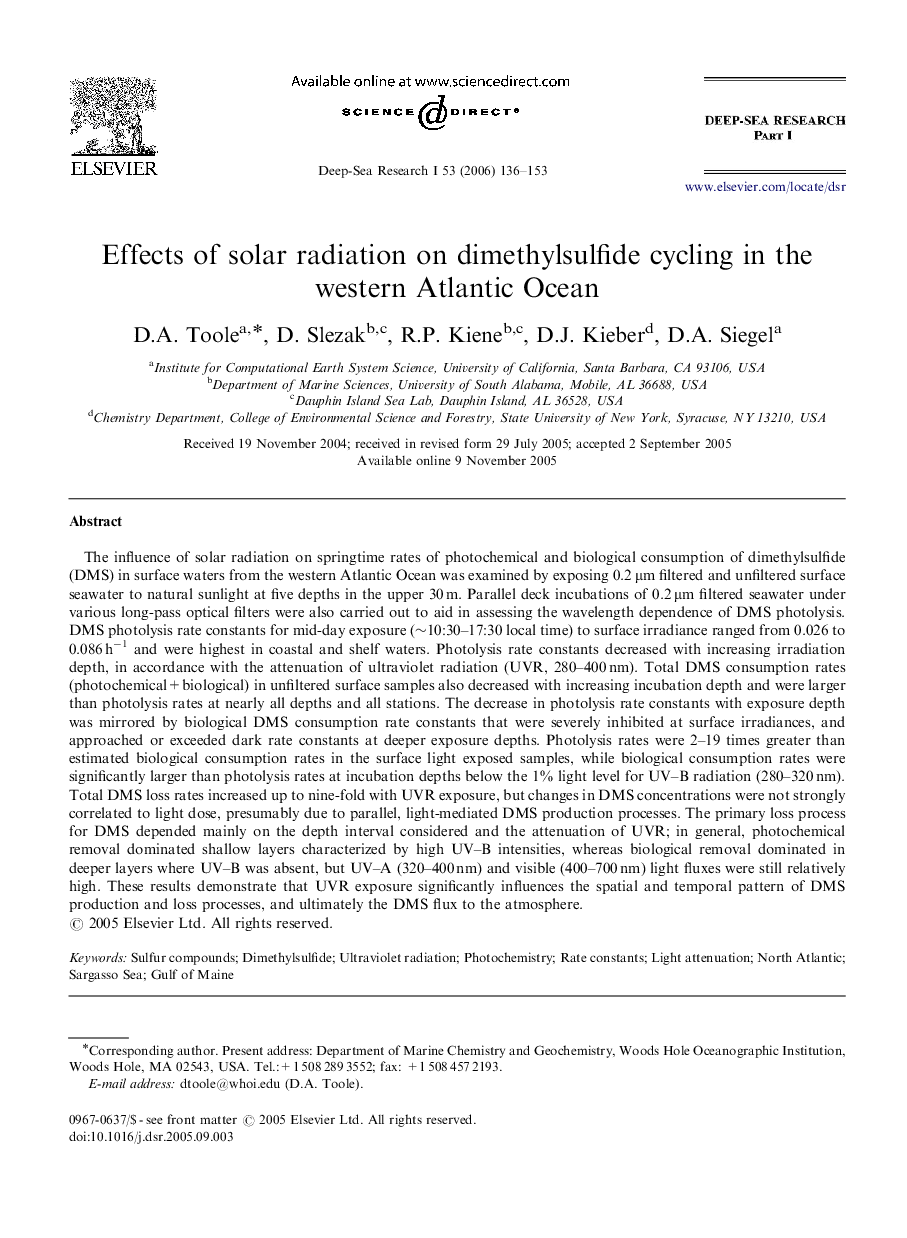| کد مقاله | کد نشریه | سال انتشار | مقاله انگلیسی | نسخه تمام متن |
|---|---|---|---|---|
| 4535752 | 1326138 | 2006 | 18 صفحه PDF | دانلود رایگان |

The influence of solar radiation on springtime rates of photochemical and biological consumption of dimethylsulfide (DMS) in surface waters from the western Atlantic Ocean was examined by exposing 0.2 μm filtered and unfiltered surface seawater to natural sunlight at five depths in the upper 30 m. Parallel deck incubations of 0.2 μm filtered seawater under various long-pass optical filters were also carried out to aid in assessing the wavelength dependence of DMS photolysis. DMS photolysis rate constants for mid-day exposure (∼10:30–17:30 local time) to surface irradiance ranged from 0.026 to 0.086 h−1 and were highest in coastal and shelf waters. Photolysis rate constants decreased with increasing irradiation depth, in accordance with the attenuation of ultraviolet radiation (UVR, 280–400 nm). Total DMS consumption rates (photochemical+biological) in unfiltered surface samples also decreased with increasing incubation depth and were larger than photolysis rates at nearly all depths and all stations. The decrease in photolysis rate constants with exposure depth was mirrored by biological DMS consumption rate constants that were severely inhibited at surface irradiances, and approached or exceeded dark rate constants at deeper exposure depths. Photolysis rates were 2–19 times greater than estimated biological consumption rates in the surface light exposed samples, while biological consumption rates were significantly larger than photolysis rates at incubation depths below the 1% light level for UV–B radiation (280–320 nm). Total DMS loss rates increased up to nine-fold with UVR exposure, but changes in DMS concentrations were not strongly correlated to light dose, presumably due to parallel, light-mediated DMS production processes. The primary loss process for DMS depended mainly on the depth interval considered and the attenuation of UVR; in general, photochemical removal dominated shallow layers characterized by high UV–B intensities, whereas biological removal dominated in deeper layers where UV–B was absent, but UV–A (320–400 nm) and visible (400–700 nm) light fluxes were still relatively high. These results demonstrate that UVR exposure significantly influences the spatial and temporal pattern of DMS production and loss processes, and ultimately the DMS flux to the atmosphere.
Journal: Deep Sea Research Part I: Oceanographic Research Papers - Volume 53, Issue 1, January 2006, Pages 136–153